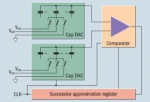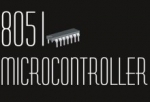D&R Industry Articles (March 2015)
Articles for the Week of March 30, 2015

Virtual Prototyping Platform with Flash Memory
In this paper we will see how the flash memories developed using Carbon Model Studio helps to bring up an ARM® Cortex A7 flash memory sub-system with primary and secondary boot codes. Flash memories system demonstrated here can be used for early boot code and driver development for any CPU based SoC.Articles for the Week of March 23, 2015

Selecting an Optimized ADC for a Wireless AFE
Internet enabled mobile devices are continuing to become more prevalent in the modern world. With this proliferation of smart, connected devices – many of which are battery powered – comes a greater need for power efficient wireless transceivers. In addition to meeting stringent power specifications, RF system designers must also ensure that their devices adhere to the latest wireless standards, including Long Term Evolution (LTE) and Wi-Fi.- Building a high-performance, low-power audio/voice subsystem
- 5 Steps to Securing the IoT
- When Your Embedded Processor Runs Out of Steam, Try Parallelism
- Improving analog design verification using UVM
- LTE-A Release 12 transmitter architecture: analog integration
- Dynamically controlled logic gate design for all power modes
Articles for the Week of March 16, 2015

The future of the 8051 legacy upgraded for the Internet of Things (IoT)
The Internet of Things (IoT) is the latest buzzword driving the industry for any number of low-power interconnected things. However, the IoT encompasses an incredible number of different types of things ranging from edge objects, namely smart or wearable devices which are battery powered with sensors and wireless connectivity, through aggregation nodes, namely hubs, routers and gateways for data aggregation, up to information processing servers in the Cloud to handle the data pushed by edge objects.Articles for the Week of March 9, 2015

Secure Virtualization as an Enabler of Trusted Execution Environments in Embedded Computing
Use of virtualization in embedded environments is growing in such things as consumer electronics, automotive and IoT applications. Virtualization can provide secure separation of resources, and this secure virtualization can aid in the creation of multiple independent security domains. Secure virtualization can be made simpler and more secure by the addition of hardware that extends the Virtual Machine to incorporate subsystems beyond the CPU.- FinFET impact on dynamic power
- USB 3.0 - Everything you need to know
- Security needs more than checklist compliance
- Understand LTE-A Release 12 transmitter architecture: Part 1
- Is the System on Chip Coming Apart?
- Queue Based Interrupt Service Protocol for Error Detection
Articles for the Week of March 2, 2015
Additional Articles- Shifting Mindsets: Static Verification Transforms SoC Design at RT Level
- Time for multimedia SoCs to get their analog signals right
- Interconnect (NoC) verification in SoC design
- Bluetooth Developer? Why Reinvent the Wireless Radio... Use the CORDIO BT4 Radio IP
- Dual edge sequential architecture capable of eliminating complete hold requirement from the test path
- BER test method uses real data
- Wireless communication standards for the Internet of Things








